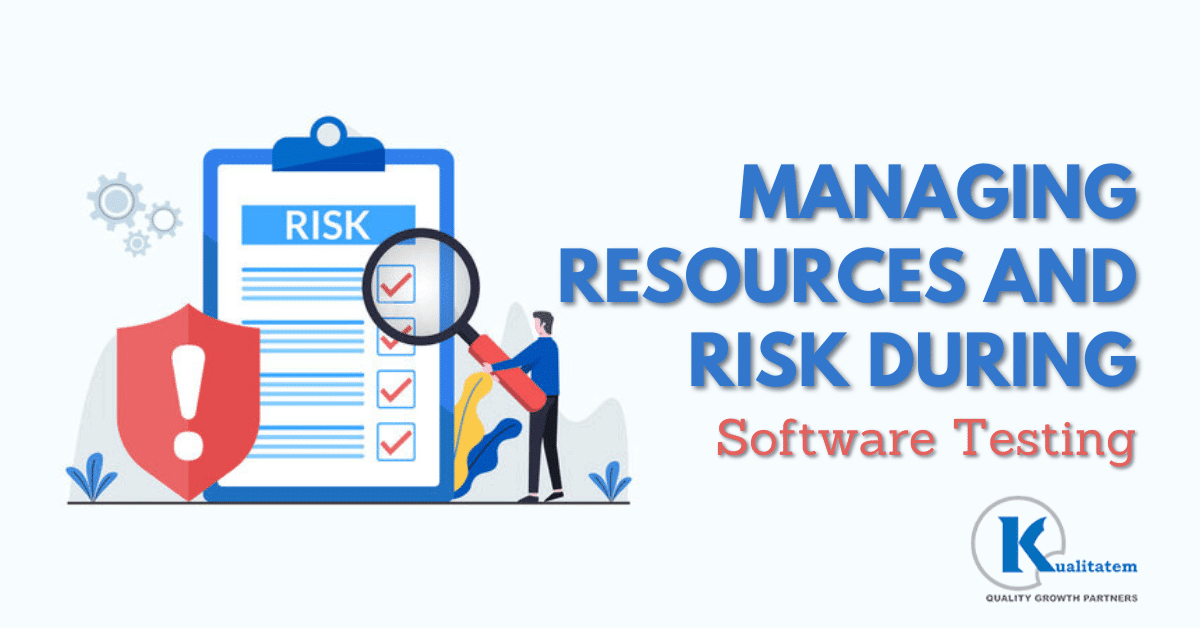Managing Resources and Risk During Software Testing

- March 9, 2023
- admin
Testing can be a complex and resource-intensive process, especially when dealing with large and complex software systems. Effective management of resources and risk during testing in software development is therefore essential to ensure that the testing process is efficient, cost-effective, and delivers high-quality software.
Managing resources in software testing entails determining and assigning the tools, workers, and equipment required to complete the testing tasks successfully. This requires careful planning and coordination to ensure that the testing in software development is optimized and that the resources are used effectively.
On the other side, Risk Management entails recognizing possible risks and creating measures to mitigate them. In software testing, risks can arise from a variety of factors, including software defects, delays, budget constraints, and communication issues. Effective risk management involves identifying and analyzing these risks and developing strategies to minimize their impact on the testing in software development cycle.
In this topic, we will explore various approaches to managing resources and risk during software testing. We will discuss best practices for resource allocation, test planning, and risk management, as well as the tools and techniques that can help teams manage these processes effectively.
Managing Resources During Testing in Software Development
The success of testing in software development life cycle largely depends on how effectively resources are managed. Here are some best practices for managing resources during software testing.
Identify and Prioritize Testing Requirements
The first step in managing resources during software testing is to identify and prioritize the testing requirements. In order to do this, the software requirements must be examined in order to determine the features and functions that need testing.
Prioritizing testing requirements helps to ensure that the most critical areas of the software are tested first and that the testing process is focused on addressing the most significant risks.
Allocate Resources Wisely
Once the testing requirements have been identified and prioritized, the next step is to allocate resources wisely. This includes.
- Selecting the right testing team
- Choosing the appropriate testing tools
- Allocating sufficient time and budget for testing
It’s crucial to confirm that the testing team has the knowledge and expertise required to complete the testing procedure successfully. Choosing the right testing tools can help to automate testing processes and make the testing process more efficient. Allocating sufficient time and budget for testing helps to ensure that the testing process is thorough and that all potential issues are identified.
Automate Testing Processes
Automating the testing process can help to save time and resources, as it reduces the need for manual testing. Automated testing tools can help to identify issues faster and with greater accuracy. This is especially important for repetitive testing tasks, such as regression testing, which can be time-consuming and tedious when performed manually.
Monitor Progress
Monitoring the progress of the testing process is crucial for effective resource management. This entails.
- Monitoring the testing schedule
- Spotting delays
- Resolving any problems that manifest themselves
It’s important to ensure that the testing process stays on track and that any issues that arise are addressed promptly to avoid delays.
Managing Risks During Testing in Software Development
Software testing also involves managing risks, as it helps to identify potential issues and prevent them from becoming major problems. Here are some best practices for managing risks during testing in software development.
Identify Potential Risks
The first step in managing risks during software testing is to identify potential risks that may arise during testing. This involves analyzing the software design and identifying areas where issues are likely to occur. Common risks include.
- Security vulnerabilities
- Performance issues
- Compatibility issues
Develop a Risk Management Plan
Once potential risks have been identified, the next step is to develop a risk management plan. This plan should include mitigation strategies and contingency plans for each potential risk. While contingency plans include creating a plan of action in case a danger does arise, mitigation techniques focus on reducing the possibility that a risk will occur.
Test for Functional and Non-Functional Requirements
Testing for both functional and non-functional requirements can help to identify potential issues with the software. Functional testing involves testing the software to ensure that it meets the functional requirements, such as ensuring that buttons work as expected and that data is entered correctly.
Non-functional testing involves testing the software for performance, security, and usability. This type of testing can help to identify potential issues such as slow load times, security vulnerabilities, or difficulties with navigation.
Continuously Monitor Risks
Monitoring risks during the testing in software development is crucial for effective risk management. This involves.
- Tracking the progress of testing
- Identifying new risks as they arise
- Addressing any issues that may arise during testing
It’s important to ensure that the risk management plan is kept up to date and that any new risks are added to the plan.
Conclusion
Managing resources and risks during testing in software development life cycle is essential for ensuring that software is released to the public without any major issues. Effective resource management involves identifying and prioritizing testing requirements, allocating resources wisely, automating testing processes, and monitoring progress.
Effective risk management involves identifying potential risks, developing a risk management plan, functional testing and non-functional testing , and continuously monitoring risks. By following these best practices, software developers can ensure that their software is tested effectively, and any issues are addressed before the software is released to the public.











